ChangXin Memory Technologies (CXMT) is Ramping up Chinese DRAM Using Qimonda IP
by Anton Shilov on December 2, 2019 9:00 AM EST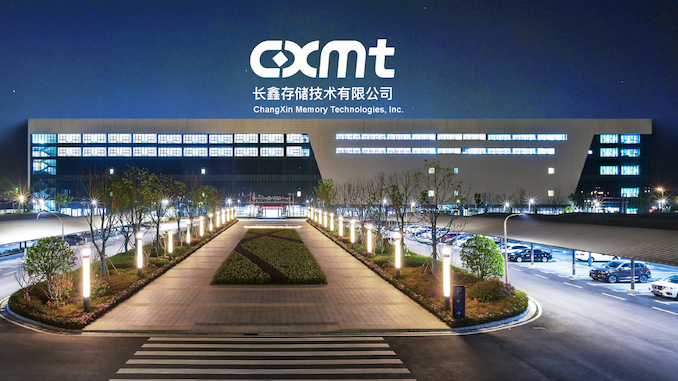
ChangXin Memory Technologies (CXMT), previously known as Innotron, has started production of computer memory using a 19 nm manufacturing technology. The company has a roadmap for at least two more 10 nm-class fabrication processes and plans to produce all types of DRAM in the future. Not only this, but CXMT has plans to build two additional fabs to boost its output.
Chinese authorities nowadays invest heavily in various high-tech companies as part of the country’s Made in China 2025 project. Because China consumes about a half of the global DRAM output, it makes a great sense for the government to develop the country’s own memory production industry, which is why numerous DRAM companies were established in the recent years. Innotron was among the first memory producers to be founded in 2016 and since then the company has worked hard on multiple projects.
Based in Anhui, Hefei, CXMT currently has over 3,000 employees and runs a fab with a 65,000 sqare meters cleanroom space that by the end of 2020 will have 120k wafers starts (12-inch) per month using 10 nm-class process technologies (for now), which is comparable to production capacity of SK Hynix's fab in Wuxi, China. At present, the fab’s output is around 20,000 wafers starts per month, but it will increase as the company lands more orders and ramps up the fab.
According to the CXMT, 77% of its employees are engineers working on various R&D-related projects. Given recent news about certain Chinese companies potentially being involved in memory IP theft, it should be noted that CXMT has licensed IP originally designed by Qimonda. This means that it has ties with Micron, which owns that intellectual property, or just acquired it from Xi'an UniIC, which also has it. Micron's Investor Relations is involved with CXMT, so we suspect the former.
At present, CXMT uses its 10G1 process technology (aka 19 nm) to make 4 Gb and 8 Gb DDR4 memory chips with the aim to ship them commercially in Q1 2020. The same technology will be used to manufacture LPDDR4X memory in the second half of 2020. The company’s technology roadmap includes 10G3 (aka 17 nm) for DDR4, LPDDR4X, DDR5, and LPDDR5 as well as 10G5 for DDR5, LPDDR5, and GDDR6.
Right now, CXMT cannot rival established players either in terms of technological prowess or manufacturing capabilities. Despite this, the company is very serious about development of new fabrication processes as well as expansion of production capacities. The company’s 10G5 process will use HKMG and air-gap bit line technology, whereas technologies to be used in longer term future will use pillar capacitors, gate all-around transistors, as well as extreme ultraviolet lithography (EUVL). Not only this, but as mentioned previously, there is a plan to build two more DRAM fabs.
One thing to keep in mind about CXMT’s roadmap is that the company originally planned to start production of DDR4 memory in early 2019, but it looks like it is a year behind its original plan.
Related Reading
- Fourth Chinese DRAM Company Established by Tsinghua Unigroup
- U.S. Government Indicts Chinese DRAM Maker JHICC on Industrial Espionage; Bans Exports To Firm
- Chinese DRAM Industry Spreading Its Wings: Two More DRAM Fabs Ready
- Chinese Xi’an UniIC Semiconductors Starts to Sell DDR4 Chips and Modules
- Intel and Tsinghua University to Co-Develop Semi-Custom Solutions for Servers
- Lite-On and Tsinghua Unigroup Create $100 Million Joint Venture for SSD Operations in China
- China Calling: AMD Forms Joint Venture for x86 Server SoCs in China
Source: CXMT Presentation


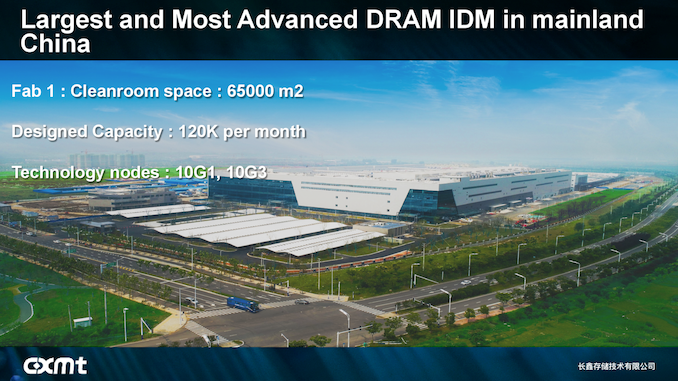

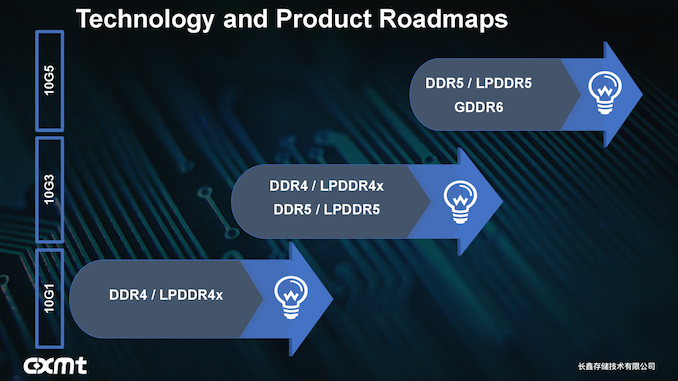

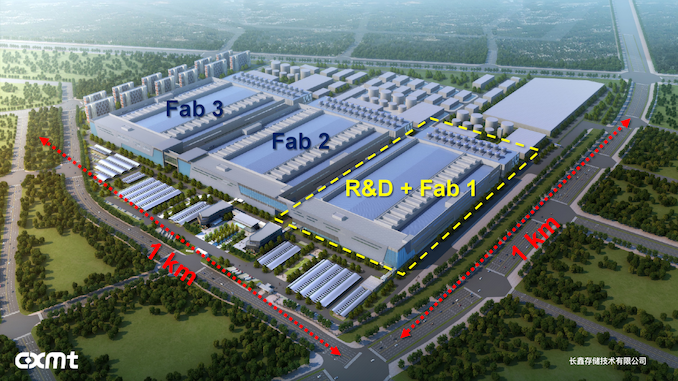
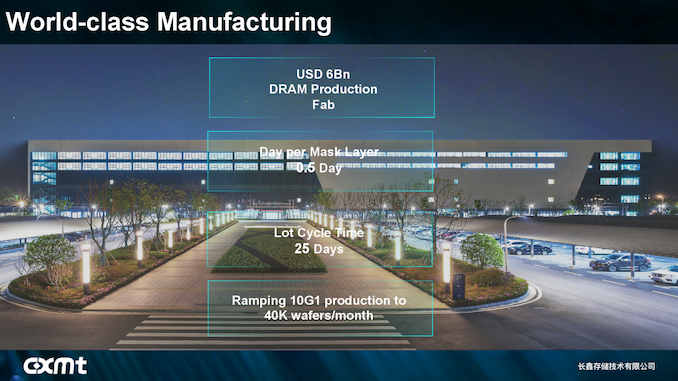














15 Comments
View All Comments
YB1064 - Monday, December 2, 2019 - link
About time somebody took down the traditional price fixing DRAM czars.Adramtech - Monday, December 2, 2019 - link
Yes, the price fixers that just allowed the price to drop the last 1.5 years out of sheer kindness.Alistair - Monday, December 2, 2019 - link
come on, 3 years later still 8GB cards, I bought 32GB memory for $110 almost a decade ago, and we're just getting back there now... DRAM pricing has been way too high for a long time, and still is (you know it is supposed to drop in price with process node, just like CPUs???)ksec - Tuesday, December 3, 2019 - link
>(you know it is supposed to drop in price with process node, just like CPUs???)Not it hasn't happened since post 1x nm. The cost of transistor hasn't declined as much, not to mention comparing price in era where DRAM manufacturer are losing money to an era where DRAM manufacture are selling a better version for the same cost and making money is a significant difference.
Adramtech - Tuesday, December 3, 2019 - link
don't forget about the last decade of inflation being wrapped up in today's pricerpg1966 - Monday, December 2, 2019 - link
Any article that's even vaguely DRAM related, and the conspiracy theorists come out of the woodwork...sonny73n - Tuesday, December 3, 2019 - link
Get your head out of the toilet and have a look at DRAM pricing history then compare that to NAND’s.They’re not only price fixing but price gouging at the same time. But hey, there are wicked imbeciles like you doing the same with whatever you can produce or might produce and think it’s good for the economy somehow.
rahvin - Tuesday, December 3, 2019 - link
NAND prices collapsed because of a massive oversupply due to tablets. An oversupply issue that's been fixed (every producer has cut output by about 20%), by mid next year NAND prices will be back where they were before the oversupply.If you think a Chinese producer will fix the DRAM industries history of price fixing you're nuts. They'll join the cartel just like everyone else.
s.yu - Wednesday, December 4, 2019 - link
From the looks of recent state capitalist practices of the Xi regime, they'll sell for cheap to satisfy certain domestic customers under state direction. What the "cartel" will do with the remaining smaller pie I don't have assumptions for, but its likely that this will result in stronger bargaining power of all major Chinese customers.nand_guy - Monday, December 2, 2019 - link
Could you please explain what you mean by this paragraph:Given recent news about certain Chinese companies potentially being involved in memory IP theft, it should be noted that CXMT has licensed IP originally designed by Qimonda. This means that it has ties with Micron, which owns that intellectual property, or just acquired it from Xi'an UniIC, which also has it. Micron's Investor Relations is involved with CXMT, so we suspect the former.
What is Micron's involvement with CXMT? It is counter-intuitive to me that they would want a rival company to which the Chinese govt will effectively give billions of dollars to use technology that they own.